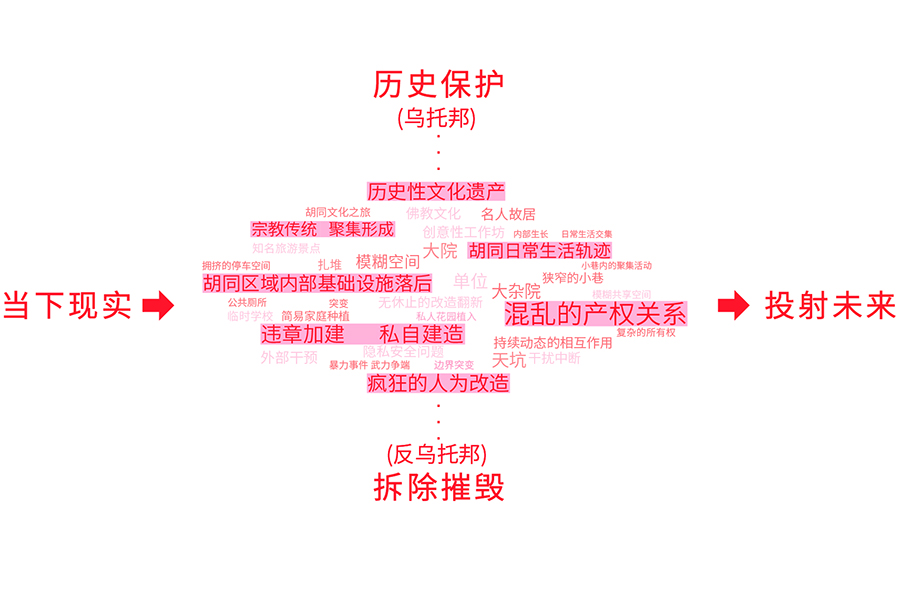
- 1 of 4
- < Previous
- Next >
[META:HUTONGS]
hutong urban researchThe narrow alleyway connecting small courtyard residences, or Hutong [胡同], has been heralded as the definitive exemplar of Beijing’s urbanism since the city became the capital during the Yuan dynasty. To this day, legions of critics and writers have looked to Hutongs as a kind of architectural endangered species, evidence of how traditional urban fabrics have been crushed under the maw of modernization and construction. This explanation is too convenient, too simple, however, and does not capture the reality of the situation in Beijing, one that continuously defies categorization or explanation.
Beijing is a city that has remained in a state of suspended animation, one that has been enduring massive political and social upheavals in ways others could not. Although the city did not being to truly change until the 1990s, a period marked by a massive influx of global capital, Hutongscontinued to play a constant and important role in the organization of urban space throughout this time. They not only defined administrative areas, but also became the nexus of socio-cultural life. And as urban demolition slowed in preparation for the 2008 Olympic Games, Hutongs proved to be more resilient than ever. Besides few private owned, many would remain for use by the government or military. In all, Hutongs are here to stay: they not only provide a glimpse into Beijing’s long and heralded history, but they are also a cultural and physical reality providing a key to a prosperous urban life in the future.
[META:HUTONGS] recognizes that as Beijing changes so do Hutongs. In this vein, a different voice is needed, one that mediates between the utopian/preservationist impulses and dystopian/demolitionist realities! Beijing must no longer be caught between an idealistic, traditional model and a progressive vision of a city that answers only to a developer-centric outlook. An alternative model of regeneration is in order, one that looks at the CURRENT REALITY from the point of view of one on the ground, so to speak. This alternative model must consider the Hutong as a laboratory that experiments with the current Beijing, a city teeming with energy and passion. This model does not want to take sides. It seeks allegiance with neither preservationists nor with demolitionists. It does not want to resuscitate a utopian fantasy, and it certainly does not want to condemn the dystopian impulse. [META:HUTONGS] is this alternative model. It is a cross-disciplinary investigation whose purpose is to create an exploratory atmosphere via workshops and charrettes: all with the goal of creating a new understanding that celebrates the unique quality of Hutong culture, and which creates PROJECTIVE FUTURE possibilities.